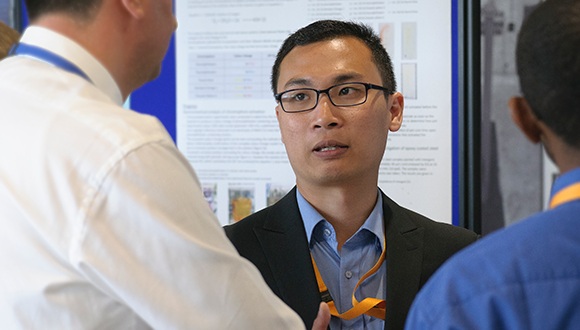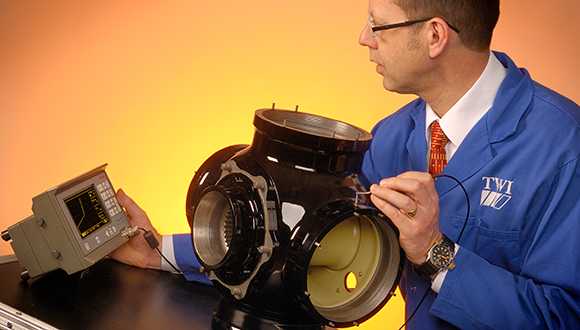Mon, 08 June, 2020
Faris Nafiah graduated with a BEng (Hons.) from the University of Auckland, New Zealand, before working in Intel in 2016. A year later he decided to pursue a master’s degree at the International Islamic University Malaysia (IIUM) in Kuala Lumpur.
During the 1.5 years MSc programme, Faris worked on pulsed eddy current (PEC), a non-destructive testing (NDT) method, the same field of research as his current PhD project.
So what drew you to this particular PhD programme...?
I have always had a passion for signal processing and electromagnetism. Analysing signals is an art of seeing the same pattern in a dozen different ways, and this field of research [pulsed eddy current testing] gives me just that.
Coincidentally, my MSc supervisor at IIUM used to be the student of my current PhD supervisor, Dr John Rudlin, and he was also stationed at TWI in 2002. I have always admired TWI’s research works, in particular, their NDT research. My MSc project was heavily influenced by Dr Rudlin’s works, and I’ve always wanted to be mentored by such a prestigious name.
 Faris Nafiah is presenting his research poster at the NSIRC 2019 Annual Conference. Photo: TWI Ltd
Faris Nafiah is presenting his research poster at the NSIRC 2019 Annual Conference. Photo: TWI Ltd
Can you tell us about your Structural Integrity PhD topic and why Industry is calling for this research...?
Pulsed eddy current research can be considered as a new and emerging NDT technique. Essentially, it is a technique to detect / evaluate corrosions occurring in pipelines, where this type of corrosion grows underneath insulation layers.
Conventional NDT techniques, such as ultrasonic testing, are incapable of detecting such corrosion, as it would require surface contact. PEC avoids this by supplying a magnetic field to the pipe’s surface, and acquiring response signals without the need to remove the insulation layers.
At NSIRC and TWI, our goal is to develop a working PEC system, with improved hardware and software. The hope is to be benefit not only by TWI, but the entire NDT industry as a whole.
Being an Industrial PhD student at TWI, what's that like...?
TWI provides a great environment for industrial research. Being able to work with leading experts in their field, utilise industry standard facilities, and receive a quality one-on-one supervision, makes my PhD research a rewarding experience.
How are you finding Cambridge...?
Cambridge is a vastly charming city, and it feels Hogwarts-y with the style of buildings. The city is super calm and small, yet big enough to offer everything I need.
Coming from a small town in Malaysia, I settled in easily. It has been the very centre of many scientific discoveries, which makes it a great place with lots of student-oriented environment.
 King's College Chapel, Cambridge. Photo: Pixabay
King's College Chapel, Cambridge. Photo: Pixabay
Have you picked up any new hobbies during Lockdown...?
Yes, I have! It’s no surprise that the lockdown has hugely impacted my (in fact, every doctorate students’) experimental works, but I have tried to make the best out of it. Apart from being able to spend a lot of time with my family (especially my two infant nieces), I started learning about web development. It started out with a simple JavaScript crash course on YouTube, and I got hooked, and now I can assuredly say that I’ve built a simple website, from back-end to front-end, which runs on AWS server.
Do you have any advice for someone who is thinking about doing a PhD with NSIRC...?
If I have one piece of advice, I would say go for it!
Say I had taken the ‘safe’ option, I would have regretted never doing a PhD. I can’t overemphasise the amount of appreciation I have for my sponsors, Lloyd's Register Foundation, for the PhD opportunity, as well as the NSIRC team for their hard work and dedication.
The experience will definitely give you various insight on how research can fit into industrial applications, and in the process, transform you into an industrial-minded researcher.
......
 Eddy Current Testing is a NDT inspection method used for a variety of purposes. To find out more, visit the TWI website. Photo: TWI Ltd
Eddy Current Testing is a NDT inspection method used for a variety of purposes. To find out more, visit the TWI website. Photo: TWI Ltd
......
Here are some more NSIRC links that you may be interested in...